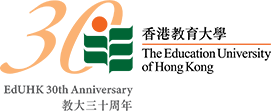Activated Carbon Made from Rice Husks and Coconut Shells as Feed Supplement for Reducing Uptake of Metal/loids, PAHs and PCBs by Nile tilapia
- Project Scheme:
- General Research Fund
- Project Year:
- 2022/2023
- Project Leader:
- Dr MAN, Yu Bon
- (Department of Science and Environmental Studies)

This project aims to determine the effects of rice husks and coconut shells as activated charcoal supplementing fish feed (AC-FF) on reducing body burden of contaminants and inference of microbial diversity in fish gills and gut of Nile tilapia (Oreochromis niloticus) under exposure to contaminants.
The specific objectives are to
- characterize activated charcoal and measure the levels of persistent toxic substances (PTS): arsenic (As), cadmium (Cd), chromium (Cr) copper (Cu), mercury (Hg), lead (Pb), zinc (Zn), polycyclic aromatic hydrocarbons (PAHs) and polychlorinated biphenyls (PCBs);
- investigate the sorption kinetics of PTS mixture by the activated charcoal;
- conduct laboratory-scale fish feeding experiments with AC-FF on fish growth and study the bioaccessibility of pollutants in fish feed, based on the in vitro gastrointestinal digestion model;
- conduct field-scale feeding experiments and test the concentrations of PTS in fish meat, water and sediment, measure fish growth, study the histology of digestive tract, fish immunity and, metagenomic analysis of microbiota in fish gills and gut; and
- evaluate human health risk using the PTS concentrations in fish meat fed by AC-FF.
This study will provide scientific support to recycling food-processing waste (rice husks and coconut shells) into activated charcoal and its capability to reduce the body burden of contaminants and their impact on gill and gut microbiota in fish upon supplementation in AC-FF for growing Nile tilapia. This study can provide important data to improve fish health and yield by adjusting fish gill and gut microbiome through feed supplementation, which is useful for providing a basis for further study of the future fish feed design in freshwater aquaculture.







